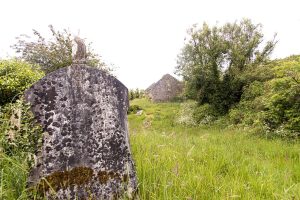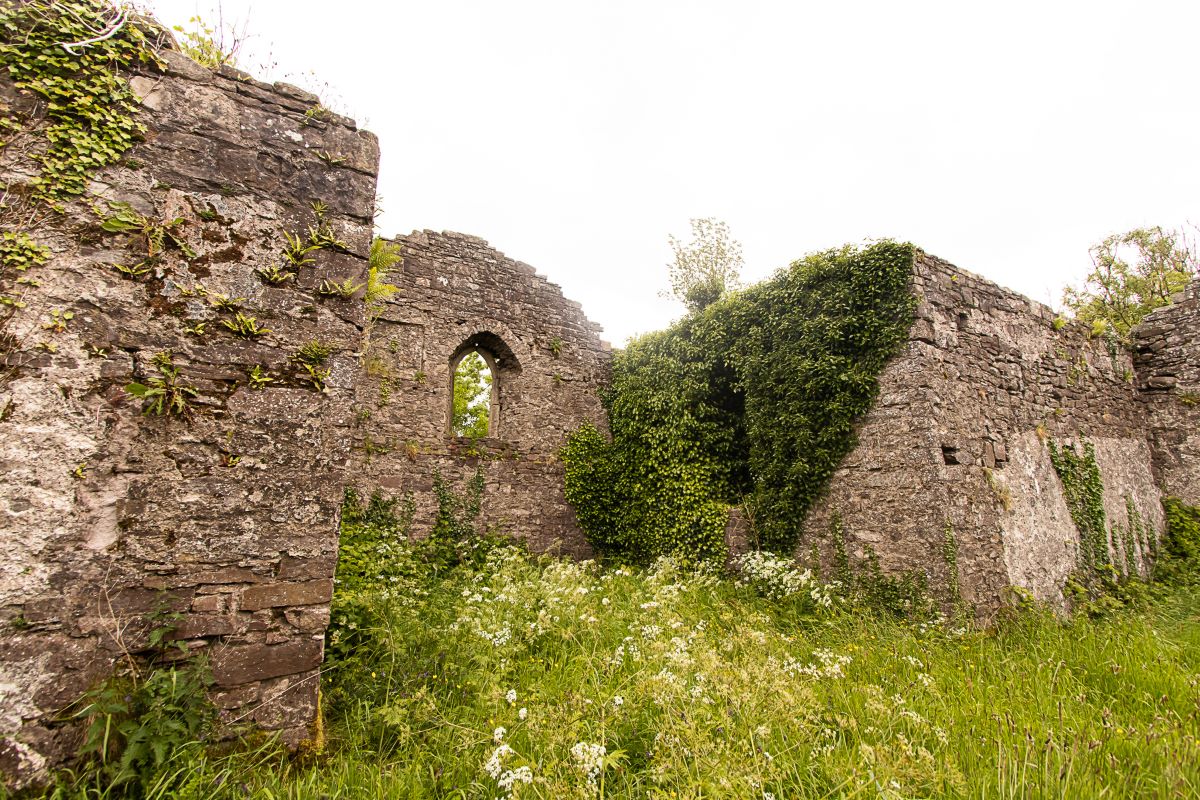The ruins of a 17th century church on the outskirts of Dromore have now been reclaimed by nature, but this peaceful location once bore witness to violence and religious conflict.

The site, holding the graves of individuals from both sides of the religious divide under the banner of the Church of Ireland, carries a worship history dating back as early as the 13th century.
According to the 1622 Royal Visitation, the site was noted to be a ‘church ruined: no Glebe house,’ suggesting that some form of restoration took place afterwards.
It is believed that this church was initially founded by the Catholic natives in the area, as marked on a map dated to 1609. However, the Catholic residency was abruptly ended following the Flight of the Earls in 1607, which led to the church coming under the acquisition of the Church of Ireland.
This change in ownership painted it as a target within the stirring tensions between settlers and natives.
In 1641, Ireland experienced a widespread rebellion by locals against the imposing reign of King Charles I, the settlers, and the laws, including the newfound faith imposed on Irish soil.
This fresh rebellion saw local fighters in Tyrone take decisive action. However, after several defeats in skirmishes, they retreated and set the Dromore church ablaze, killing many inhabitants.
It wouldn’t be until 1694 that the church would recover and be rebuilt, with the original graveyard remarkably unharmed by the arson attack.
The new Church of Ireland, built upon the damaged church, consisted of a rectangular nave measuring 20 meters by 7.5 metres, with a even-metre square transept projecting from the middle of the south wall. Several architectural details survived, including several windows on the remaining walls.
The church is surrounded by a graveyard to the side and rear of the site, with headstones found directly outside the ruins. Remains are believed to still be present today, with previous archaeological digs uncovering bodies beneath the church foundations.
Penal laws
As for the local Catholic population, practicing their faith became outlawed in 1695 with the introduction of the Penal Laws. These laws forced worshippers to pray in secret at nearby Mass Rocks and gardens. For Dromore, this meant traveling in secrecy to a thorn bush in Aghadarra, near where the old St Dympna’s Chapel stands today, or out to the Mass Rock at Pigeon Top. The penal laws weren’t relaxed until the late 1700s, allowing Dromore parishioners to return. They were then granted land by Lord Belmore of Fermanagh, who owned extensive lands in Dromore. Lord Belmore granted a piece of land to Fr Patrick Slevin, a native of Aghadara, for building a Catholic Church.
With the stipulation that it must be built in a hollow and unseen from the Protestant church, the new site chosen was near the old Mass Garden in Aghadarra, where the old St Dympna’s Church still stands today. The new Catholic church was constructed in the late 1770s and repaired in 1783. It was again repaired in 1820 with the addition of a slated roof, and 15 years later, it was rebuilt to its present size before being ceiled and seated in 1856. This church was used until the new St Davog’s Church opened its doors in 1987.
headstones
Within the graveyard of the Church of Ireland ruins lie headstones of locals dating back as far as the 17th century. One such grave within the site belongs to the family of Nathan Funston, a man who left Ireland for North America in 1735, years before the USA was founded. They first settled in Northampton County, Pennsylvania, near Easton. One of his sons, John, is very prominent in the historical records of Pennsylvania in the late 1700s and early 1800s.
However, one of the oldest graves dates to around 1620. Over the years of weathering, the name and date on the headstone have become nearly illegible, although it is believed to read ‘Elizabeth Alexander’. Found on this headstone alongside text that reads, ‘Her soul’s in heaven, her body here doth rest, in dust assured, to now stand blest,’ is a mark resembling a skull and crossbones.
The last burial recorded at the site was in 1932, and involved a local man, John McCracken.
However, by this stage the church had long since been disused.
By the early 1800s, a decision was taken to construct a new church entirely, designed to fit the ever-growing population of Dromore and surrounding areas.
On December 11, 1846, the new church was completed and unveiled to a crowd of 900 people who persevered through wintry showers to attend the grand opening. At the time, it was described as having a ‘simple exterior’ but also being ‘elegant and substantial’. The internal appearance was noted to be ‘very elegant’, featuring a stained glass window and an organ.
For the church left behind, the only attendees to the site were those visiting and tending to family graves. Today, the site remains silent, closed off to the public who regard the church as a central part of Dromore’s heritage.
Since its closure, residents have watched as the growth of shrubbery reclaims this historic place of worship.







